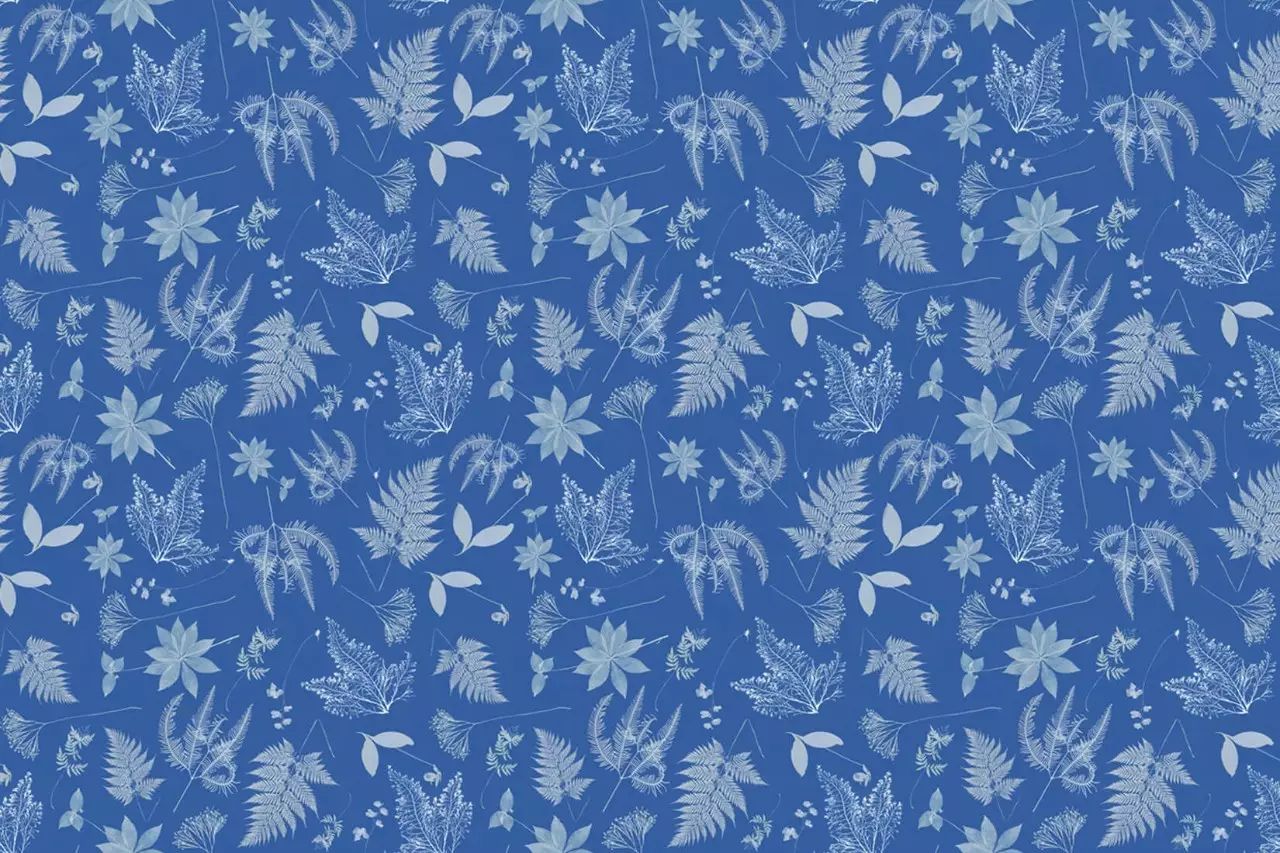
Do you remember the blue science album that was pushed before? I have friends to share my experience with DIY.
do you remember the blue science album that was pushed before? In the 19th century, botanist Anna Atkins made many blue photos of algae and used them to publish the world's first album:
this tranquil and romantic blue. In fact, you can also have the miserable thallium baby to share the experience of DIY blue plant silhouette painting.
Proper wedding dresses for pregnant brides at low price! We have the right selection to suit your tastes.
first of all, review the principle:
Blue exposure is a very classical low-cost photo development method. It requires two main reagents: ammonium ferric citrate and potassium ferricyanide. These two ingredients do not react in the dark, but under ultraviolet light, ammonium ferric citrate is converted to divalent ferric salt, which then reacts with potassium ferricyanide to form dark blue ferrous cyanide (Prussian blue, it is also a classic blue pigment).
here are the results of the first test:
well, there is still a gap between the original and the original. (omega.) However, more practice should be able to get close to the level of the album!
are there any friends who want to experience this ancient craftsmanship? Watching the images of plants printed on paper little by little by the sun? Here comes the next tutorial!
1. Experiment preparation:
We need these things:
those glass instruments can be replaced with bowls, chopsticks, spoons and bottles that are common at home, just don't put any more food after the experiment. There are both medicine and electronic scale.
Note: potassium ferricyanide itself is low toxic (don't be afraid, it's not potassium cyanide), but when it encounters acid or high temperature (380 ℃), it will decompose into toxic gas, so you must keep it properly!
2. Prepare blue suntan solution:
my ratio is: 40g potassium ferricyanide: 500ml water; 100g ferric ammonium citrate: 500ml water. In theory, it is best to use distilled water, and it is no problem to use tap water lazily. In theory, it takes a measuring cylinder to measure the solution, but since the concentration of the solution is not too accurate, I roughly estimated the volume with the scale on the beaker. If there is no measuring container, 330 ml canned soda and 500 ml beverage bottles can be used to roughly estimate the volume.
after preparation, put it in a bottle and make a note with a label:
We know that the blue sun is blue because the two solutions react under the action of ultraviolet light after mixing in the same volume. So storing the two solutions separately, rather than mixing them directly to make a blue suntan solution, can last a little longer.
when needed, mix the two solutions in the same volume, and ammonium ferric citrate can be slightly excessive. Put the mixed liquid in a brown bottle and keep it out of the light.
3. Make photographic paper:
use the brush to brush the mixed liquid on the paper, pay attention to the operation in a place away from light. At this time, the solution should be fresh green:
(I believe you should apply it more carefully than I do)
if it is a disabled party, apply it with a paintbrush as large as possible, or even with a brush. This can effectively reduce the depth of different strokes. After painting, dry in a dark place.
4. Sun plants:
put the photographic paper on a hard pad, cover the selected plant, cover it with glass, and secure it with a clip. And then take it to the sun. Glass is fine with the most common transparent glass. It is enough to bask in the sun for three to five minutes. If it is cloudy, you can extend the time appropriately, and you can also use ultraviolet light if possible. When the dark green on the paper changes to silvery blue, it is almost enough. strong>
take off the photographic paper, it should look like this:
(yes, a little too much)
then rinse it with water and wash away the unreacted solution. Until the flushed water is no longer yellow, the washing is over. After drying, you will get the finished product as at the beginning of the article!
VI. Advanced play
although this Prussian blue is very good-looking, what if you get bored if you read too much? Change the color!
rinse with potassium permanganate after washing, the picture will turn purple.
if you don't have potassium permanganate at home, try black tea. The tannic acid in the tea can make the picture brown.
Advanced
have you found that all the plants I have sunburned have a good outline? Because this method can only simply record the shape of the plant. If you want to sun out a good-looking vein. First treat the leaves with lye (just like making leaf vein bookmarks), and then put them on photographic paper to dry.
Masters
this process is also one of the early methods used to develop photos and make engineering drawings (the origin of the "blueprint"). You can try to print a black-and-white negative on transparent film paper. instead of the vegetation placed in the above steps, you will get a manually printed photo.
(a nostalgic blue photo)
do you want some blue of your own?